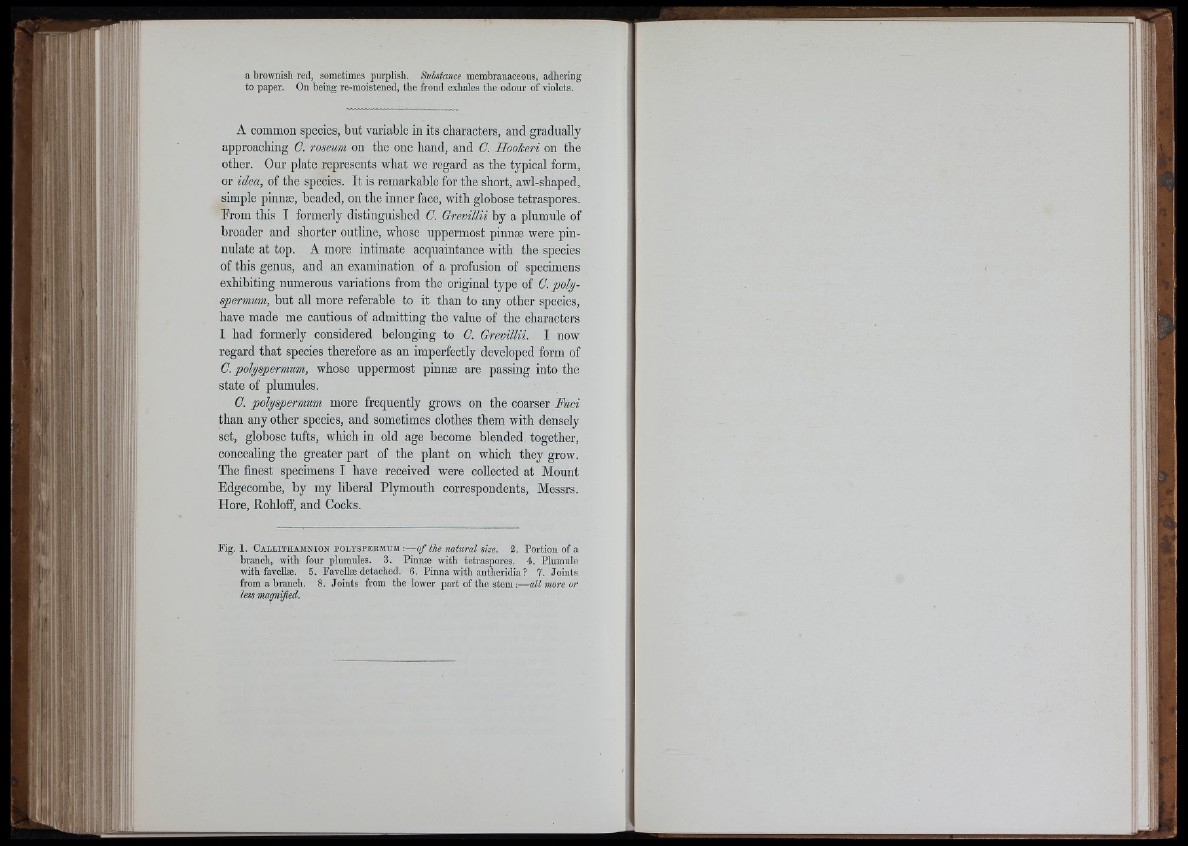
Ill
'■ Il 1
iii ii I
i 1 i
I i i i
a brownish red, sometimes purplish. Stthdance membranaceous, adhering
to paper. On being re-moistened, the frond exhales the odour of violets.
A common species, but variable in its characters, and gradually
approaching C. roseum on the one hand, and C. Hooheri on the
other. Our plate represents what we regard as the typical form,
or idea, of the species. It is remarkable for the short, awl-shaped,
simple pinnæ, beaded, on the inner face, with globose tetraspores.
From this I formerly distinguished C. Grevillii by a plumule of
broader and shorter outline, whose uppermost pinnæ were pinnulate
at top. A more intimate acquaintance with the species
of this genus, and an examination of a profusion of specimens
exhibiting numerous variations from the original type of 0. polyspermum,
but all more referable to it than to any other species,
have made me cautious of admitting the value of the characters
I had formerly considered belonging to C. Grevillii. I now
regard that species therefore as an imperfectly developed form of
C. polyspermum, whose uppermost pinnæ are passing into the
state of plumules.
C. polyspermum more frequently grows on the coarser Fuci
than any other species, and sometimes clothes them with densely
set, globose tufts, which in old age become blended together,
concealing the greater part of the plant on which they grow.
The finest specimens I have received were collected at Mount
Edgecombe, by my liberal Plymouth correspondents, Messrs.
Hore, Rohloff, and Cocks.
Fig. 1. C a l l i th a m n io n P O L Y S P E R M U M :— o f the natural size. 2. Portion of a
branch, with four plumules. 8. Pinnæ with tetraspores. 4. Plumule
with favellæ. B. Favellæ detached. 6. Pinna with antheridia ? 7. Joints
from a branch. 8. Joints from the lower part of the stem :— all more m